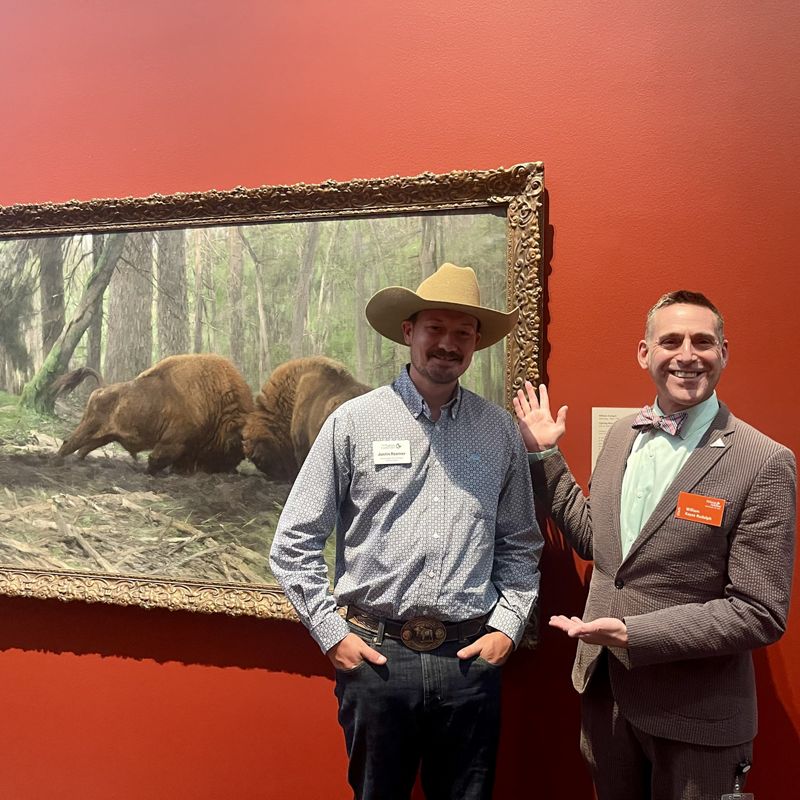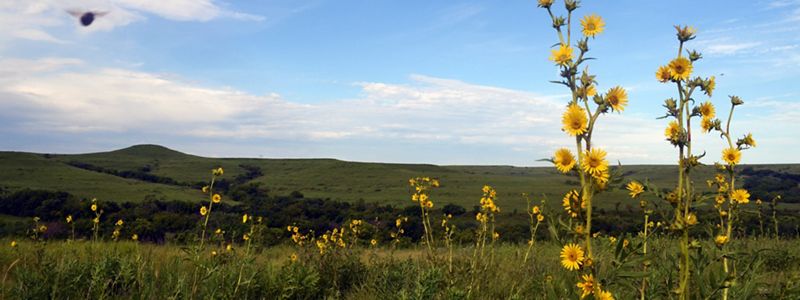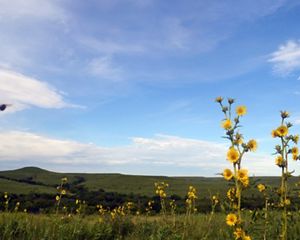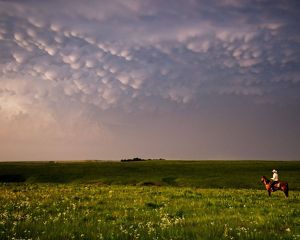
Once upon a time, paintings of nature and wildlife allowed audiences an escape from their daily lives and a chance to view the natural world in ways only previously imagined. This rings true today, too.
In August, The Nature Conservancy teamed up with the Nelson-Atkins Museum of Art and Linda Hall Library to explore the rich connections between science, art and nature. The afternoon featured three presentations and a walk through the museum's Survival of the Fittest exhibit, showcasing the impacts of early conservation movements, existing threats to our natural world and the work being done to mitigate these challenges.
Guests from both Kansas and Missouri heard from Rebeca Escamilla of Linda Hall Library, who shared contextual knowledge of Charles Darwin's On the Origin of Species; William Keyse Rudolph of the Nelson-Atkins Museum, who delved into the ways Darwin's theory changed our understanding of the natural world and how artists depict it; and The Nature Conservancy's Justin Roemer, who connected both presentations to the vital conservation work we're doing here in Kansas and around the world.
Most people don't realize that grasslands are the least protected and the most threatened terrestrial habitat on earth.
The grasslands of North America are no exception; 62% of all North American grasslands have already been lost due to agricultural conversion, urban development, invasive species and woody expansion. In the Great Plains, we’re continuing to lose approximately 2 million additional acres every year.
Despite the losses, within a short drive from Kansas City, you can still find expansive panoramas of windswept grasses, colorful wildflowers and unbounded skies—a glimpse of the grand wilderness that once supported vast herds of bison (buffalo) along with other grazers like elk, deer and pronghorn.

Grasslands also support a sustainable food supply, provide clean water, sequester carbon and support some of the richest biodiversity on the planet. Beyond the ecosystem benefits they provide, our prairies have rich cultural significance and are critical for rural economies.
Today, The Nature Conservancy in Kansas and Missouri has preserves across both states where we are conserving healthy grasslands and working directly with landowners and a wide range of partners to preserve this critical habitat.
We invite you to plan a visit for yourself this fall, and maybe check out your local art museum to escape in the meantime.
Stay in the Know!
Sign up to receive monthly conservation news and updates from Kansas. Get a preview of Kansas' Nature News email.

Nature Needs You!
The mission of The Nature Conservancy is to conserve the lands and waters on which all life depends. For more than 30 years, we’ve worked in Kansas to do just that. We've permanently protected 161,000 acres across the state, including six preserves that are open to the public.


